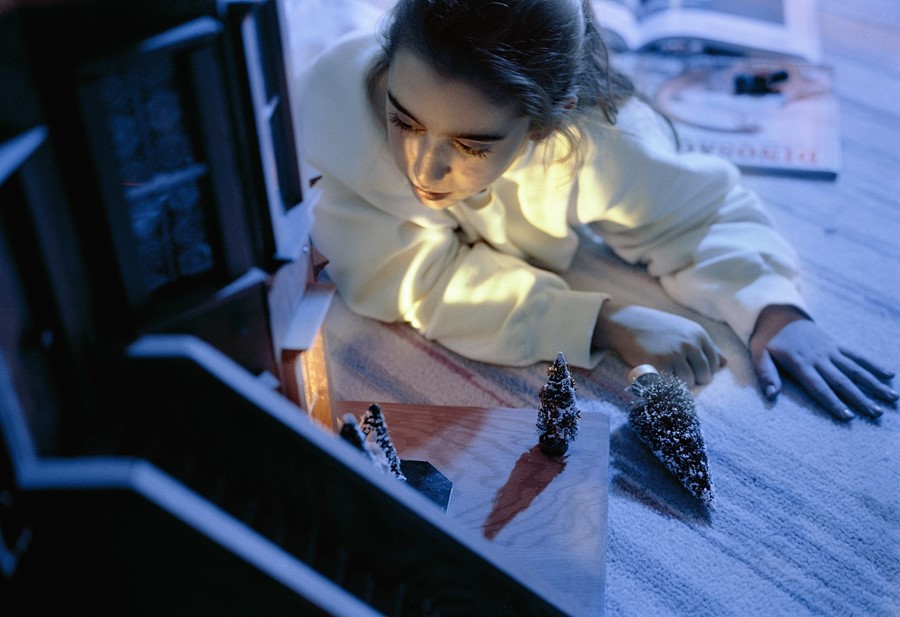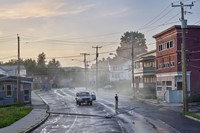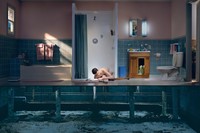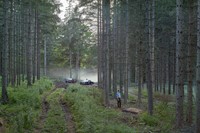As a new exhibition of his work opens in Vienna, Gregory Crewdson talks about how the films of David Lynch and Alfred Hitchcock inspire his uncanny photographs
Elaborately produced and meticulously directed, the New England depicted in Gregory Crewdson’s photographs is both visually stunning and keenly familiar, riffing on the kind of American suburbia traditionally beloved by the big screen. “We’ve been coming here as a family my entire life – this is the place I respond to,” Crewdson say of his relationship with Massachusetts, the nucleus of his work and where, since 2010, he has lived in a former Methodist church (his studio, in an old firehouse, is immediately next door). “A lot of photographers travel, chronicle the world. I, for better or worse, stay in one place. Instead of going wide, I try to go deep.”
Of the ten series that comprise the photographer’s eponymous new monograph (published by Prestel to accompany a retrospective at Vienna’s Albertina Museum), almost all honour the region, shot predominantly on local streets, other times employing a soundstage built to resemble recognisably Northeastern interiors. There’s Beneath the Roses (2003-8), perhaps Crewdson’s most involved production, and Cathedral of the Pines (2013-14); Twilight (1998-2002) and Hover (1996-97), for which the photographer adopted a black and white aesthetic, approaching the set with a birds-eye view.
Leaning into his preoccupation with cinema – Crewdson says that Alfred Hitchcock is core to his way of seeing, while he recently enjoyed the “ambient mood” of Oz Perkins’ horror film Longlegs – the photographer’s process typically mirrors that of a motion picture, with shoot times of up to eight weeks and an extensive period of post-production. As Walter Moser observes in one of the book’s seven texts, “Hardly any essay about the artist is complete without an astonished reference to the high cost of materials used in the production, the technical perfection of his photographs, and the meticulous attention to detail during the setup.”
Below, in his own words, Gregory Crewdson reflects on making pictures and marrying the familiar with the unknown.
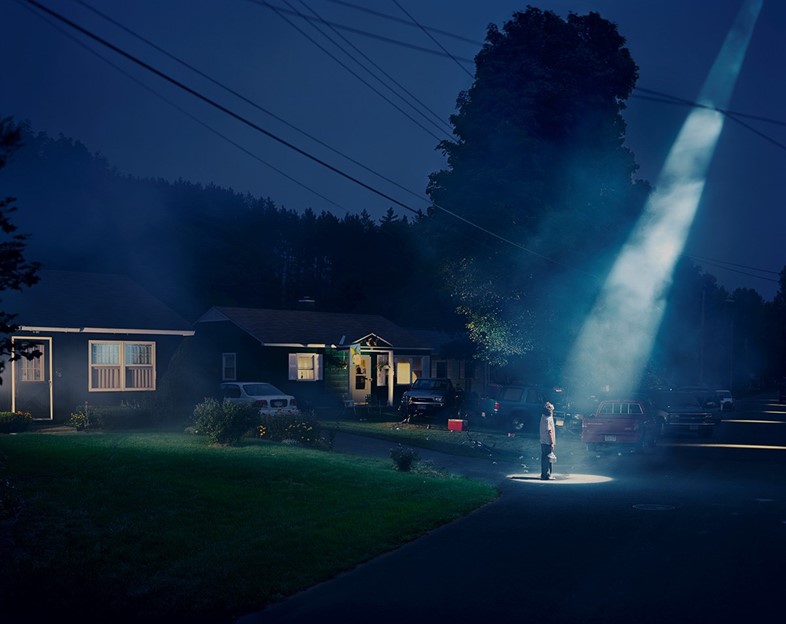
“Swimming and location scouting are central to my creative process. When I do my open water swims, I allow my imagination to open up and images pour in. It’s become a kind of religion to me over the last ten years – I define my whole day around it. It’s really the scouting that defines the work though, when I drive around in circles in these same towns I’ve photographed for so many years, to find something that feels like it could accommodate one of my pictures. That starts the whole process.
“I’m more influenced by films than by art. I respond to not only the history of filmmaking but how movies look. I’ve always been interested in blurring that cinematic approach with still photography. It wasn’t conscious when I began, but at my core I am a storyteller. Unlike movies, photographs have a limited capacity to tell a story; they’re frozen and there's no before or after.
“For me, everything begins and ends with Hitchcock’s movies. I love how they’re accessible entertainment but also very dark in terms of their obsessions. When I saw David Lynch’s Blue Velvet, it changed my way of seeing the world, and I love [Roman Polanski’s] Chinatown. I’m primarily interested in art – not only movies but paintings, photography, literature – that finds something extraordinary in everyday life, or some kind of theatrical lilt.

“The mystery [of photographs] is the elusive part. I try to make a picture that’s really beautiful formally, and then the mystery is the part that sits outside of your control, that transforms it into something that’s not so knowable. I love mystery; I much prefer to be confronted with a question rather than an answer, and all photographs are implicitly question marks – they don’t resolve themselves. I like the combination of looking for mystery in some place that feels very familiar.
“At a certain point, I started to think that the making of the pictures was also interesting (which is why we included the production stills). The final pictures are very still, isolated moments, but it takes a lot of chaos to get to that point. And I’ve always loved watching behind the scenes of movies, director’s cuts and stuff. I’m fascinated with seeing how people make things. We have a very particular way of making pictures that tells its own story about my obsessions and relationships with the people who work alongside me, some for 25 years, or even more.
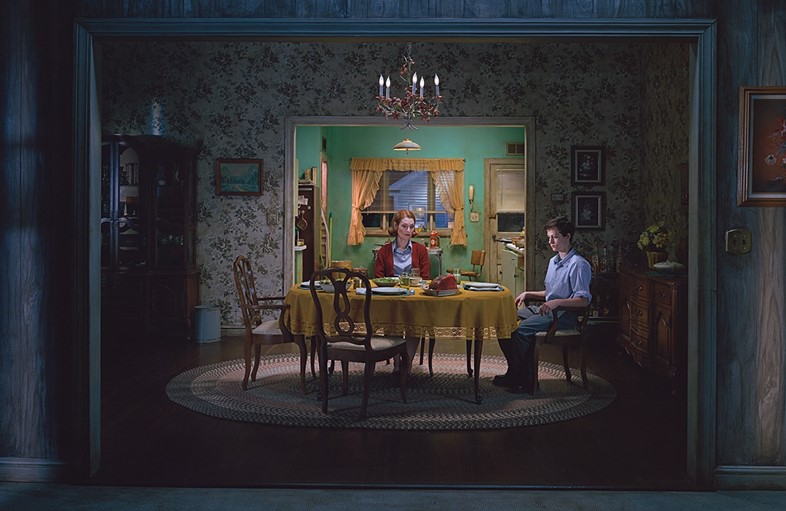
“It’s a very emotional experience, to look back at all your work and see the cross-connections. To me, the takeaway is: you are who you are. I’ve often said that every artist has one story to tell, and that’s basically true. When you’re coming of age as a young artist, you define your terms, obsessions, fears, desires … and then you spend your life circling around those things. You push it, try to reinvent it, but you always come back; the basic plot of your life remains. Looking at pictures I made in graduate school, I can see how those themes circulate through to recent work.”
Gregory Crewdson is on show at The Albertina Museum in Vienna until 8 September 2024. Gregory Crewdson, edited by Walter Moser, is published by Prestel and is out now.
